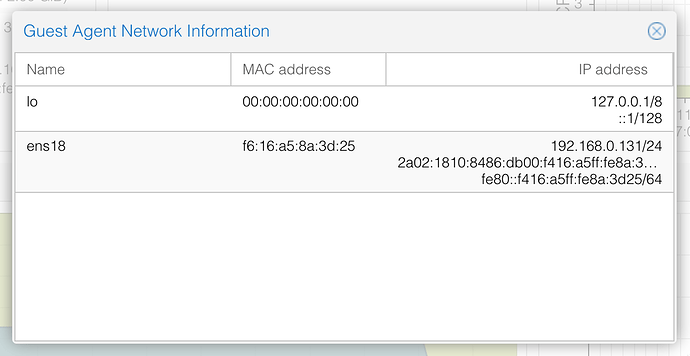With the setup you have, it is a bit challenging to add a second network that is addressable by your physical hardware. I can think of something without needing to buy new hardware, but you would need your proxmox host always on 24/7. Otherwise, you will need to apply static routing in your physical boxes, which is annoying, as you’d have to do it each time you want to access the VMs. And it may be limited by certain virtualization quirks (macvtap interfaces cannot communicate with the host, so that may potentially not allow it to work at all unless you use a router container).
Try deleting the interface altogether in the VM options, then adding a new interface in its place. Maybe that will give you a new MAC.
If you want a different subnet for VMs, but you only have your external router, if that’s an ISP router, you are kinda SOL. You can create a Proxmox container with say debian or ubuntu and give it 2 interfaces: first bridged to Proxmox bridge, so it can communicate with your physical network’s layer 2. Disable DHCP on the ISP router and set a static IP address on it, keep it 192.168.0.1. On the container, set the first IP on the 192.168.0.2 and make the static default route through 192.168.0.1.
In the container, set the second IP address on the first interface to 10.10.1.1. In Proxmox, create a second bridge that bridges to nowhere. Then in the container options, add an interface and bridge it to the second bridge. Inside the container, set the second interface IP to 10.10.2.1. Enable DHCP on both interfaces and now your physical devices, including Proxmox (if you are using DHCP) should be getting IPs from 10.10.1.0/24 and your VMs and containers (if you bridge them to the second bridge) should get IP addresses from 10.10.2.0/24.
It is a janky workaround, but should get the job done as long as Proxmox and that container stay up. You can enable the container to start on boot alongside proxmox.
Another way, if you buy a physical box to use as a gateway (even an old router if you can run OpenWRT on it should work, many old routers can serve this purpose, or you can buy a first gen raspberry pi or banana pi or whatnot, should do the same job just fine). The default gateway for your ISP router will remain on the WAN. But in its DHCP server config, you can set the default gateway to the IP address of the new box. I’ll call it “pi.”
On the Pi, you set a static default route to the isp router’s ip address, so all the devices on your network will go through the pi and if it doesn’t know the route, like say going to LLTV, it will forward traffic to the isp router. The pi should have a second route to the 10.x subnet via proxmox, or a router container inside proxmox.
This will allow you to not run proxmox 24/7, but you will be limited to the network speed of the pi. If you get a 1st gen pi, that would be about 133 MB/s. If you don’t have internet faster than this and this is enough speed for your inter-network traffic, then it should be fine. Otherwise, if you want gigabit speeds between your vms and physical layer, you need something that can route at gigabit speeds.
Using the same router container, instead of disabling or modifying the DHCP on the isp router, you can set up a static route on say your mac. You’d have 0.0.0.0/0 via 192.168.0.1 (default route via isp router) and a 10.10.1.0/24 via 192.168.0.58 (random ip I thought of for the container router, it could be anything in that subnet, unless you set it up statically).
Lastly, which I have not really considered, because isp routers suck, is that you may be able to add a static route to your 10.x network straight in your router, so you can avoid the pi setup above. But all of these imply you setting up a router container inside proxmox. I think proxmox can serve as the router itself if you set up another bridge, but it makes it easier to manage if you set a container. Bonus points if you install zentyal or something, someone else on the forum is supposedly using it. I only used it once at work and it wasn’t my jam, but it could do for you.
Let me know if you have any questions, I know it’s a long post.


